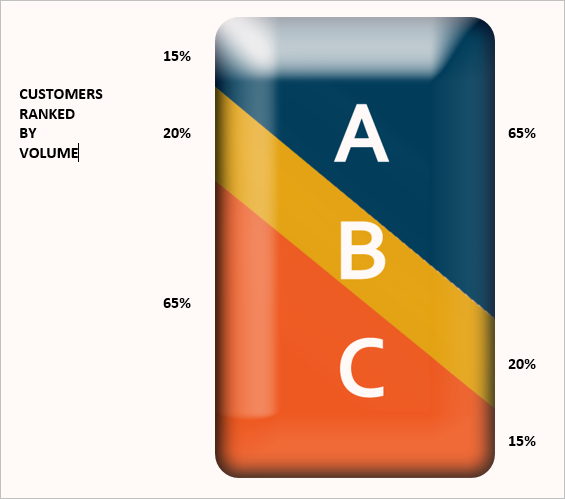
Imagine you’re managing a sales territory with hundreds of existing accounts to call. How should you best allocate your calling efforts?
This allocation question gets to the essence of successful territory management. For example, if you allocate a sizable number of calls to medium or low-potential accounts because they’re accessible, conveniently located, or friendly, it’ll hurt long-term results. On the other hand, if you spend a considerable number of calls with the high-potential accounts, you’ll get greater results for your efforts.
High-performing sales professionals understand that you call most frequently on those accounts with the highest actual or potential sales yield. Here is a three-step process for determining your proper call allocation.
Step 1: Determining Expected Value for Each Account
The first step is to determine the “expected value” of each of your accounts. The expected value for an account is a sales dollar figure, a target that enables you to compare one account with another objectively. The objective is to identify each account’s potential sales yield to you. This will allow you to sort your accounts into categories: high-potential accounts, medium-potential accounts, and low potential accounts. By categorizing your accounts in this structure, you can manage your territory so that you allocate more time for calls on the high-potential accounts and less time for calls on the low-potential accounts.
To determine the expected value for an account, you should consider the following formula that incorporates two key factors: your annual sales to the account and the growth potential of the account.
Expected value (EV)=
[repeat sales (RS) x probability (P)] + [added volume (AV) x probability (P)]
Repeat sales, RS, is how much business you’ve been getting from the account on an annual basis. Probability, P, is the likelihood of maintaining that business, expressed as a percentage. Added volume, AV, is your estimate of all the potential business that you could get from the account, including normal growth and business now going to competitors. Probability, P, is your estimate of your chances of getting a share of this potential if you made an intensive effort to gain it by allocating more calls on the account, implementing appropriate strategies, and so on.
Relying on instinct, or “gut reaction” alone in determining probability can lead to inaccurate estimates. Here are three critical factors that have an impact on probability.
- Relationship. Ask yourself, “How strong is my relationship with the key people in the account?” If you maintain a personal, ongoing productive relationship with the key people in an account, and they trust and respect you, this is good leverage for further penetration. On the other hand, if this were a new account or one for which you haven’t been able to establish a relationship, your probability of growing the account may be low.
- Competition. Ask yourself, “How much of a factor is my competition in this account?” Competition is almost always a factor and, depending on the account, you’ll have different degrees of competition. For example, the competition may be experiencing problems, there may be new competitors calling on your accounts, or you may face few serious competitors.
- Decision-Maker Access. Ask yourself, “How open is my access to the decision-maker(s)?” If the decision-maker is unavailable, rate probability as low. You should further reduce the probability in accounts where there are multiple decision makers.
Step 2: Categorize Accounts According to Yield
The next step in allocating calls according to account yield is to categorize your accounts as high, medium, or low-yield.
Research shows that 15% of the accounts in any given territory will yield 65% of the dollar sales volume in that territory. These comprise your “A“ accounts. Another 20% (“B” accounts) yield 20% of territory sales, and the majority (65%, the “C” accounts) yield 15% of total sales volume.

Therefore, rank each of your accounts as “A,” “B,” or “C” by assigning an “A” classification to the 15% with the greatest Expected Value. A “B” Classification to the 20% with the next highest EV, and a “C” to the remaining accounts.
Step 3: Develop Call Frequencies
The purpose of determining an expected value for each account and sorting the accounts into categories is to establish call frequencies based on account yield. “A” accounts should be called on most frequently (65% of your calling efforts), the “Bs” less often (20% of your calling efforts) with the “Cs” getting contacted on the least frequent basis (15% of your calling efforts). The benefit: you have a proven method to determine how often to call on a given account.
It requires time, dedication, and discipline to determine expected values, categorize accounts, and allocate calls according to yield. However, this one-time investment in time and effort will produce long-term benefits in helping you manage your territory successfully.
